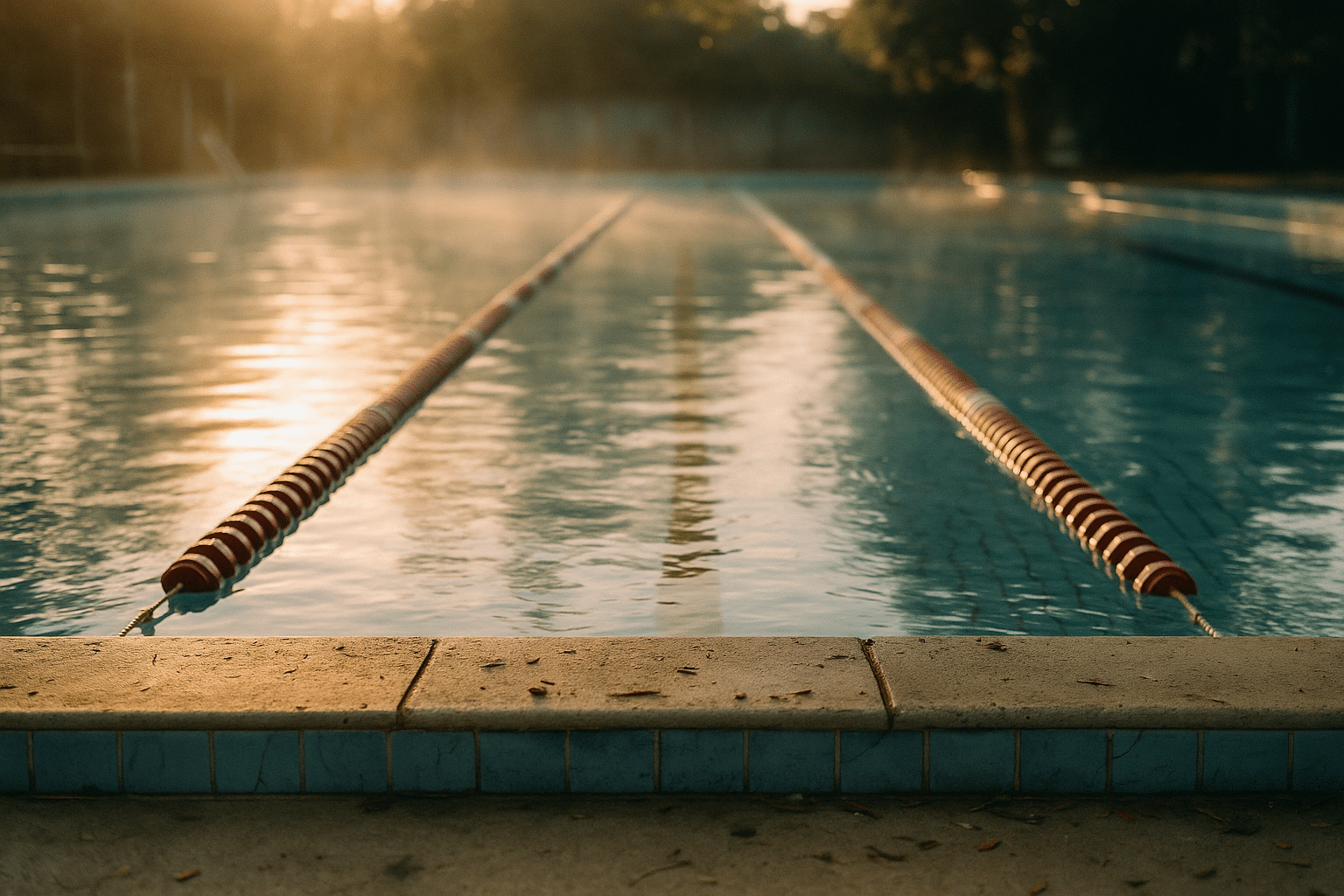
Explore the world of swimming
Swimming is both a life skill and a lifetime sport. Whether you glide through calm lanes before sunrise or face the playful push of open water, you’re engaging the heart, lungs, and every major muscle group with gentle efficiency. Buoyancy eases impact on joints, making aquatic movement welcoming for beginners, older adults, and those returning from injury—yet it also scales beautifully for athletes who crave challenge. In the water, effort becomes visible as spirals of ripples; focus narrows to breath, rhythm, and the simple arithmetic of strokes. It’s a practical path to fitness and a pocket of peace in a busy day.
Beyond personal wellness, swimming supports community safety and environmental awareness. Learning to swim reduces risk around water, strengthens confidence, and opens doors to recreation and travel. It’s exercise, transportation, and even meditation—sometimes all in the same session.
Outline:
– Why swimming matters: whole-body health, mind, and longevity
– The four strokes explained and how to refine technique
– Training plans: endurance, speed, and open-water readiness
– Safety, hygiene, and access for every age and ability
– Conclusion: bringing swimming into your life
Why Swimming Matters: Whole-Body Health, Mind, and Longevity
Swimming engages large muscle groups in a coordinated rhythm that boosts cardiovascular fitness and muscular endurance while remaining remarkably joint-friendly. In chest-deep water, buoyancy can reduce weight-bearing load substantially, and immersion to neck level can cut it by roughly nine-tenths. This relief lets people with knee or hip discomfort move more freely, and it helps all swimmers train consistently with less impact-related stress. The hydrostatic pressure of water also assists venous return, which often lowers exercise heart rate in water by about 10–15 beats per minute compared to similar land efforts—useful to know when setting intensity.
Energy expenditure scales with stroke choice, technique efficiency, and pace. For many adults, a steady swim can expend a few hundred calories per hour, while vigorous intervals commonly push far higher. Because water is denser than air, even modest resistance multiplies over thousands of strokes, resulting in meaningful conditioning for the upper body, core, and legs. Over time, swimmers often notice improved posture from balanced back and shoulder work, stronger hips and glutes from consistent kicking, and enhanced mobility because each stroke cycles the joints through a broad range of motion.
There’s also a mental dividend. The sensory quiet of water narrows attention: breathing patterns anchor focus, and lap-by-lap repetition can feel like a moving meditation. Many swimmers report reduced perceived stress after sessions, a smoother mood, and better sleep on training days. For those who find land-based exercise monotonous or harsh, the novelty of water—cool on the skin, rhythm in the bubbles—can be refreshing and motivating.
Practical benefits extend beyond the pool. Comfort in water supports safer vacations, more confident boating and paddling, and a richer enjoyment of lakes and oceans. In short, swimming offers a rare blend: low-impact conditioning for the body, calm for the mind, and a life skill that enhances everyday safety and play. Consider it a “liquid gym” where cardio, strength, and mobility work in seamless partnership.
- Key upsides in brief:
– Low joint impact with high muscular engagement
– Scalable intensity from gentle recovery to demanding intervals
– Mental focus and relaxation through breath and rhythm
– Practical safety skill with year-round relevance
The Four Strokes: Biomechanics, Efficiency, and Technique Cues
Each of the four competitive strokes—freestyle, backstroke, breaststroke, and butterfly—has a distinct rhythm and energy cost. Understanding their mechanics helps you choose the right tool for each training goal and refine technique to move more efficiently.
Freestyle: This is the go-to for many because it balances speed and efficiency. Key elements include a long, aligned body position, hips near the surface, and a high-elbow catch where the forearm and hand “hold” water early. Rotational timing—rolling the torso as one connected unit—reduces drag and powers the pull from strong trunk muscles rather than just the shoulders. Common pitfalls include crossing the midline during the pull, sinking hips, or overkicking to compensate for poor balance. Drills such as side-kick with one arm extended, catch-up (touching hands in front each stroke), and fingertip drag (to encourage high elbows) can sharpen feel.
Backstroke: Sharing freestyle’s alternating arm pattern but performed supine, backstroke offers posture benefits and engages the posterior chain. The neutral head position (eyes up, waterline at the ears) keeps the hips high. A steady, compact flutter kick stabilizes the body, while a slight rotation allows a clean catch with each arm. Avoid pressing the chin to the chest, which can sink the hips, and keep wrist alignment neutral to spare the shoulders. Because breathing is unconstrained, backstroke can be a smart recovery or technique-focused option between harder sets.
Breaststroke: Unique for its symmetrical pull and kick, breaststroke rewards timing. The sequence is glide, pull, breathe, kick, glide. Power comes from a fast, narrow in-sweep with the hands and a whip-like kick that starts at the hips, travels through the knees, and finishes with the feet together. Excessive knee splay or a wide, slow pull adds drag. Many find breaststroke less oxygen-taxing at easy paces yet more demanding on the legs. Drills to try: kick on the back with hands at the sides to focus on clean foot snap, and scull patterns at the front to improve feel for the water.
Butterfly: The most formidable stroke combines a simultaneous arm recovery with a two-beat dolphin kick—one kick during the catch and one during the recovery. Think of peeling the body over a wave: chest down, hips up, then hips drive as the chest rises for the breath. Efficiency hinges on rhythm, not brute force. Overlifting the head or muscling the pull leads to early fatigue and shoulder strain. Short sets with generous rest, single-arm butterfly, and body-dolphin drills help build rhythm and resilience.
- Technique reminders:
– Streamline: push off every wall with a tight, aligned body
– Early vertical forearm: anchor the forearm and hand before pulling
– Kick as a stabilizer: small, steady kicks complement a good catch
– Breathe low: keep the crown of the head leading and minimize lift
Comparatively, freestyle and backstroke are often the most economical for distance, breaststroke offers variety and mobility benefits, and butterfly amplifies power and coordination. Rotating strokes within a session distributes load across joints and keeps training mentally fresh.
Training Plans and Progression: From First Laps to Confident Endurance
Effective swim training blends technique practice, aerobic conditioning, and targeted speed work. Because water reduces impact, frequency can be higher than many land sports—yet smart progressions are still essential to protect the shoulders and maintain motivation.
General guidelines:
– Frequency: 2–4 sessions per week suits most adults; add a fifth if recovery is solid
– Structure: warm-up, skill work, main set (endurance or speed focus), cool-down
– Intensity cues: use breathing comfort and perceived effort; heart rate runs lower in water
– Progression: increase total distance or time by roughly 5–10% per week when feeling good
Beginner plan (about 30–40 minutes, 2–3 times weekly):
– Warm-up: 6–8 minutes easy swim or kick with board
– Skill set: 6 x 25 meters freestyle drill (e.g., side-kick, catch-up) with ample rest
– Main set: 6 x 50 meters easy to steady, breathing every 3 strokes on some reps
– Cool-down: 4 x 25 meters backstroke or gentle breaststroke, focusing on smooth form
Aim to keep rest generous; the goal is comfort, not exhaustion. When 50s feel easy, add a few 75s or an extra set of drills.
Intermediate endurance plan (45–60 minutes, 3–4 times weekly):
– Warm-up: 400 easy mixed strokes, then 4 x 50 build (start easy, finish strong)
– Skill set: 8 x 25 drills (high-elbow catch, fingertip drag) on steady rest
– Main set: 3 x 400 at a steady pace with 30–45 seconds rest, or 16 x 100 at threshold pace with short rest
– Cool-down: 200 easy
This plan improves aerobic capacity and sustainable pace. Keep stroke count per length steady; if it climbs, refocus on streamline and catch.
Speed and power focus (40–50 minutes, 1–2 times weekly within a mixed plan):
– Warm-up: 300 easy + mobility drills
– Prep: 8 x 25 fast kick or sprint swim with full recovery
– Main set: 12 x 50 fast on generous rest or 6 x 100 strong with negative split
– Cool-down: 300 easy mixed strokes
Short, fast bouts enhance neuromuscular drive and stroke precision at speed—stop the set if form decays.
Open-water readiness (45–70 minutes):
– Sighting practice in the pool: every 6–8 strokes, lift eyes briefly to “spot”
– Unbroken swims: 1–2 long continuous pieces per week to simulate steady pacing
– Pace changes: e.g., 5 x 300 alternating moderate and comfortably hard
– If available, occasional group swims to learn drafting and navigation
When transitioning outdoors, increase distance modestly and respect water temperature, currents, and visibility.
Compared with land sports, swimmers can accumulate volume without pounding, but technique margin matters more: a small efficiency slip compounds across thousands of strokes. Mixing strokes, adding light dryland mobility for shoulders and hips, and scheduling one easier recovery swim each week can keep progress moving while warding off overuse. Record sets and times to notice trends, but also track qualitative notes—how the water felt, breathing patterns, and shoulder comfort—to guide adjustments.
Safety, Hygiene, and Access: Enjoying Water with Confidence
Water invites joy and demands respect. Thoughtful safety habits help you enjoy pools, lakes, and oceans with confidence. Even competent swimmers can underestimate conditions or overestimate energy reserves, so proactive planning pays off.
Core safety practices:
– Never swim alone in open water
– Choose lifeguarded settings when possible
– Check conditions: temperature, currents, waves, visibility, and entry/exit points
– Wear a brightly colored cap in open water; consider a tow float for visibility
– Warm gradually, and watch for cold stress: numb hands, clumsy stroke, shivering
In pools, rules exist for good reason. Walk on deck surfaces to avoid slips. Use lane etiquette—split the lane or circle swim, yield at the wall, and push off with care. Rinse before entering; this supports water quality for everyone. Well-managed facilities maintain a disinfectant residual and balanced pH to limit pathogens and protect skin and eyes. If the water looks unusually cloudy or has a strong smell, ask staff about recent maintenance; it’s reasonable to choose another time or lane if you’re unsure.
Drowning prevention begins with skill building and sensible boundaries. Early instruction is valuable at any age, and adults who missed out on lessons can progress quickly with patient coaching and regular practice. Float, tread, roll-to-breathe, and short unbroken swims form a foundation for confidence and safety. In open water, learn basic navigation and practice calm breathing if a wave surprises you—roll onto your back, kick gently, and regroup before resuming.
Accessibility matters. Aquatic programs increasingly support a wide range of needs, including adaptive lessons for people with mobility or sensory differences, gentle water exercise for older adults, and welcoming lanes for beginners. If shoulder discomfort limits freestyle, try more backstroke or use a pull buoy sparingly while focusing on body position. Ear care, skin hydration, and warm layers after swimming make the routine comfortable year-round.
For families and groups, establish simple check-ins and clear meet-up points. In natural settings, learn local hazards—rip currents, submerged rocks, sudden drop-offs—and avoid areas near boat traffic unless designated for swimmers. A little preparation transforms uncertainty into confidence, allowing the water to be what it is meant to be: delightful, restorative, and safe.
- Quick safety checklist:
– Swim with a buddy or in supervised areas
– Know the plan for entry, exit, and warming up after
– Respect your limits; stop before form and judgment fade
– Keep gear visible and in good repair
Environments and Gear: Pool vs. Open Water, Essentials, and Sustainable Habits
Choosing where and how to swim shapes your experience. Pools offer predictable distances, controlled conditions, and easy interval training. Outdoors, water comes alive with light, texture, and subtle currents that challenge control and enhance awareness. Both environments have their charm, and many swimmers enjoy rotating between them.
Pools: Lap lanes simplify pacing and progress tracking. Water temperature is typically steady, and walls provide frequent feedback on streamline and push-offs. Essentials are modest: goggles that seal comfortably, a cap to manage hair and improve hydrodynamics, and optional tools (kickboard, pull buoy, short fins) to isolate skills. Keep accessories as aids, not crutches: for example, use fins to learn body position and ankle mobility, but remove them often to own the movement pattern.
Open water: Lakes and oceans reward patience and planning. Sighting keeps you on course; practice lifting the eyes minimally to avoid breaking body line. A thermal layer appropriate to water temperature helps you stay warm and comfortable, and a bright cap supports visibility. Study the shoreline before you start: pick landmarks for navigation and note safe exit points. Start with short loops close to shore on calm days, and add distance as confidence grows.
Sustainable habits make aquatic pursuits kinder to the planet and the community:
– Rinse gear in fresh water and dry it fully to limit invasive species spread between lakes
– Choose reef-friendly sun protection (long-sleeve rash guards, shade, mineral formulas) where appropriate
– Share space courteously: yield lanes, give wildlife room, and pack out everything you bring
– If you manage a backyard pool, consider covers to reduce heat loss and evaporation
Cost and logistics vary. Pools typically involve facility access fees, but they offer consistency and year-round training. Open water is often free, though parking, safety equipment, and travel add considerations. Comfort grows with routine: a simple pre-swim checklist—goggles, cap, towel, hydration, warm layer for after—helps you arrive calm and ready. Over time, you’ll learn the small preferences that make each swim smooth, like the goggle strap tension that survives a strong push-off or the breathing pattern that keeps your rhythm even in a light chop.
With a few well-chosen essentials and respectful habits, you can enjoy the clarity of pool training and the adventure of natural water—each enriching the other.
Conclusion: Bringing Swimming Into Your Life
Swimming invites steady progress without drama: small refinements in body line, breath, and timing add up to smoother, faster, more enjoyable laps. Begin where you are. If you’re new, two or three short sessions per week build comfort quickly. If you’re returning, let technique lead the way for a few weeks before chasing speed. For seasoned swimmers, a refreshed mix of drills, threshold sets, and open-water sessions can reignite motivation.
Think in seasons. A winter phase might prioritize pool intervals and technique; spring could introduce longer steady swims; summer opens doors to lakes and oceans; autumn refines pacing and efficiency. Keep notes on what works: the warm-up that wakes up your catch, the cue that keeps hips high, the rest interval that maintains form while nudging fitness forward. Pair swimming with light mobility for shoulders, thoracic spine, and hips to keep movement easy and resilient.
Above all, stay curious. Notice how water teaches—too much force turns to splash, while well-timed pressure moves you forward almost effortlessly. Celebrate small wins: a calmer breath at the end of a set, a cleaner turn, a cheerful return to the pool on a day when motivation felt thin. Confidence in water is a gift to yourself and those around you, expanding what’s possible on vacations, day trips, and ordinary afternoons.
- Next steps:
– Choose two realistic swim times this week and commit to them
– Pick one stroke cue to practice (for example, “long spine” or “quiet kick”)
– Add one safety habit to your routine (such as a buddy or simple conditions check)
– Revisit your plan after two weeks and adjust based on how you feel
Whether your goal is fitness, stress relief, or adventure, the water is ready. Step in, let the surface settle behind you, and discover how far patience, rhythm, and a few well-placed strokes can carry you.


